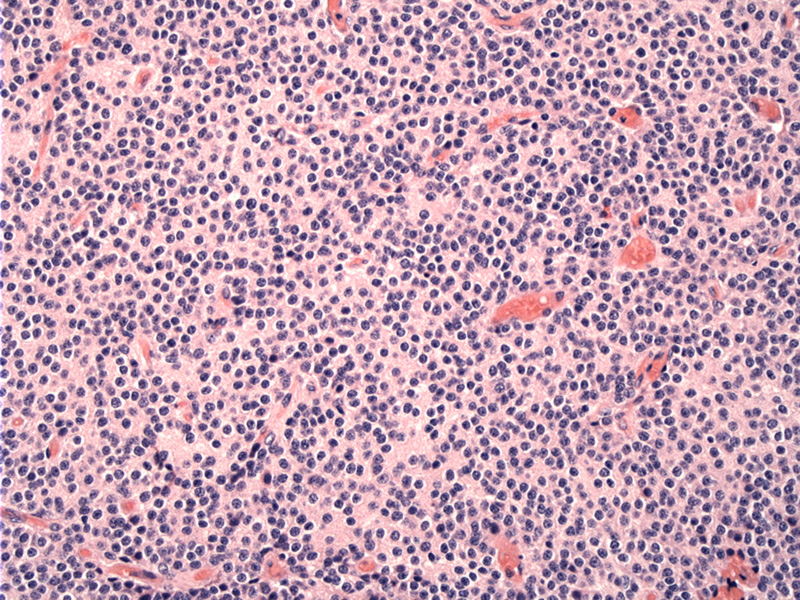System: CNS: Brain: Neoplastic: Central Neurocytoma

System: CNS: Brain: Neoplastic: Central Neurocytoma



sheets of monotonously small- to medium-sized neoplastic cells == diffuse growth Image
neoplastic cells with uniform round-to-oval nuclei and inconspicuous nucleoli. The chromatin pattern is vesicular. The cytoplasm is clear or eosinophilic with indistinct border Image
new case from u of mich brain tumor interfact Image
med power with an area of tumor necrosis Image
3 Image
Central neurocytomas are rare intraventricular neoplasms of the central nervous system, accounting for only 0.25-0.5% of brain tumors, first described only as recently as 1982.
The main features of this rare tumor include: 1) a lateral ventricular location, 2) occurrence in young adults, 3) characteristic radiological features, 4) histological resemblance to oligodendroglioma or ependymoma, 5) immunophenotypically of neuronal origin , and 6) a favorable prognosis with benign biological behavior in many, but not all, cases.
most often involve the lateral ventricles of young adults; present with headache and visual changes, and the duration of clinical symptoms and signs typically is under 6 months. Most symptoms are attributed to increased intracranial pressure secondary to obstructive hydrocephalus
CT scans typically show an iso- or slightly hyperdense mass invthe body of the lateral ventricles near the foramen of Monro. Areas of hypodensity correlate with cystic degeneration. Approximately half contain areas of calcification on CT.
maximal resection is the ideal option, with best long-term prognosis in terms of local control and survival. The role of adjuvant radiotherapy may benefit those with incomplete resection and in atypical neurocytoma. Chemotherapy may be used for recurrent tumors that cannot be resected and have been radiated, although long-term responses have not been reported for chemotherapy.
Althought regarded as low-grade neoplasms, they can be associated with an aggressive primary course or recurrence after resection; Histological features of anaplasia are not predictive of behavior, but the proliferation index MIB1 may be useful in predicting tumor relapse.